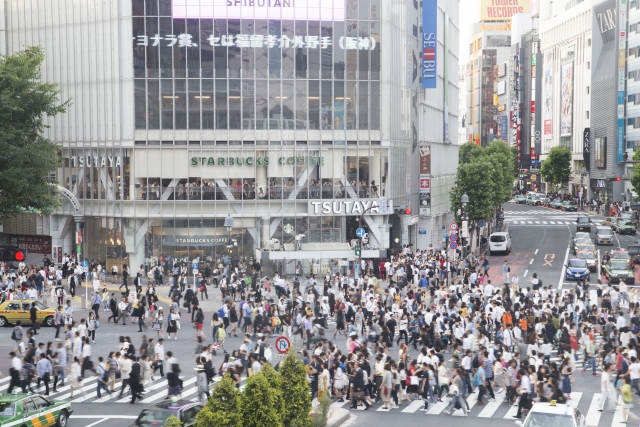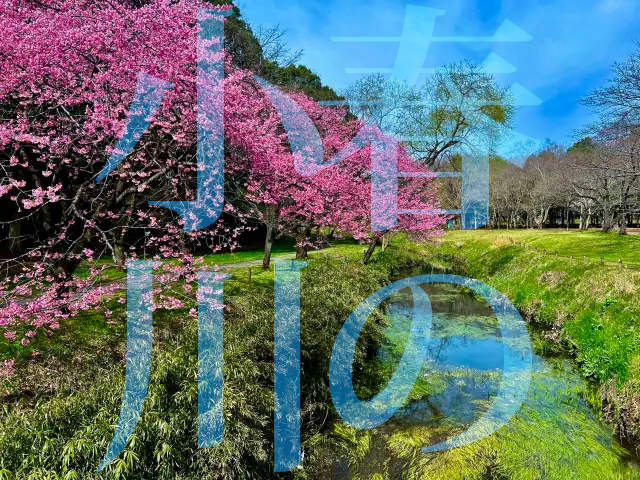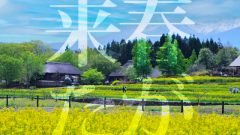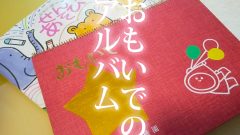Haru no ogawa
Haru no ogawa wa sarasara yuku yo
Kishi no sumire ya renge no hana ni
Sugata yasashiku iro utsukushiku
Sakeyo sakeyo to sasayaki nagaraHaru no ogawa wa sarasara yuku yo
Ebi ya medaka ya kobuna no mure ni
Kyou mo ichinichi hinata de oyogi
Asobe asobe to sasayaki nagaraLyricist:TAKANO Tatsuyuki (original)
/ HAYASHI Ryuuha (complementary)
Composer:OKANO Teiichi
in 1912
Spring Brook
Spring Brook flows swiftly,
On the banks, violets and lotus flowers,
Their gentle and lovely figures reflected in the water,
Whispering, “Bloom, bloom.”
Spring Brook flows swiftly,
With shrimp, minnows, and schools of small fish,
They swim all day in the sunshine,
Whispering, “Play, play.”

The Hidden Evolution of “Spring Brook”
This beloved song with its gentle spring melody beautifully portrays flowers blooming on riverbanks and creatures swimming happily in warm sunlight. However, when it was born in 1912 (Taisho 1), the lyrics weren’t written in today’s simple language but in the elegant literary style of the Meiji era. Phrases like “sarasara yuku yo” (flowing gently) were originally “sarasara nagaru,” and “sugata yasashiku” (gentle appearance) was “nioi medetaku” (fragrant and splendid)—expressions that were more formal and richly evocative. In 1941, during wartime, when elementary schools were renamed “National Schools,” the lyrics were transformed into colloquial language that younger children could more easily understand. This song represents a testimony to Japan’s modernization and the evolution of its educational approach.

The Brook That Vanished Underground, A Cityscape Transformed
The brook from the song once flowed through what is now Udagawa-cho in Shibuya, a district that has become one of Tokyo’s busiest entertainment centers. As the name “Shibuya” (meaning “valley”) suggests, this area was naturally situated in a valley where streams flowed freely. However, the relentless tide of urbanization has forced the once-clear stream underground, now flowing as a culvert beneath the streets. Though the name Udagawa-cho still carries the legacy of the river in its name, the vibrant storefronts and crowds have completely obscured any visible trace of the brook that once defined this landscape.
By Unknown author – Japanese book “Visual History of Nostalgic Station” published by Kokusho-kankoukai., Public Domain, Link
Listening for the Whispers of a Century-Old Spring in the Busy Streets
When humming “Spring Brook” in modern Shibuya, amid the crowds and neon lights, one might experience a curious overlapping of time periods. Perhaps beneath our feet, invisible to the eye, that brook still flows with its gentle “sarasara” sound. Though eras have changed from Meiji to Taisho, Showa, Heisei, and now Reiwa, the tender feelings of spring conveyed by this song continue to resonate in our hearts. In the midst of our busy daily lives, remembering this song and contemplating the hidden brook below might bring a moment of poetic reflection—a subtle touch of color enriching our modern urban existence.
Modern Japanese History Inscribed in a Children’s Song
The evolution of “Spring Brook” mirrors Japan’s modern history. From Meiji-era literary language to wartime educational reforms and the environmental changes brought by urbanization, this song harbors the breath of various eras. While children’s songs often evoke nostalgia, behind them lie significant shifts in educational philosophies, national identity, and environmental transformation. Each song we casually hum carries rich historical layers. Though many old school songs have disappeared from today’s textbooks, they remain valuable cultural heritage that transmits the sensibilities and values of Japanese people from times past.

▲A monument stands near Yoyogi Park, near NHK. The original lyrics are written on the monument.




コメント